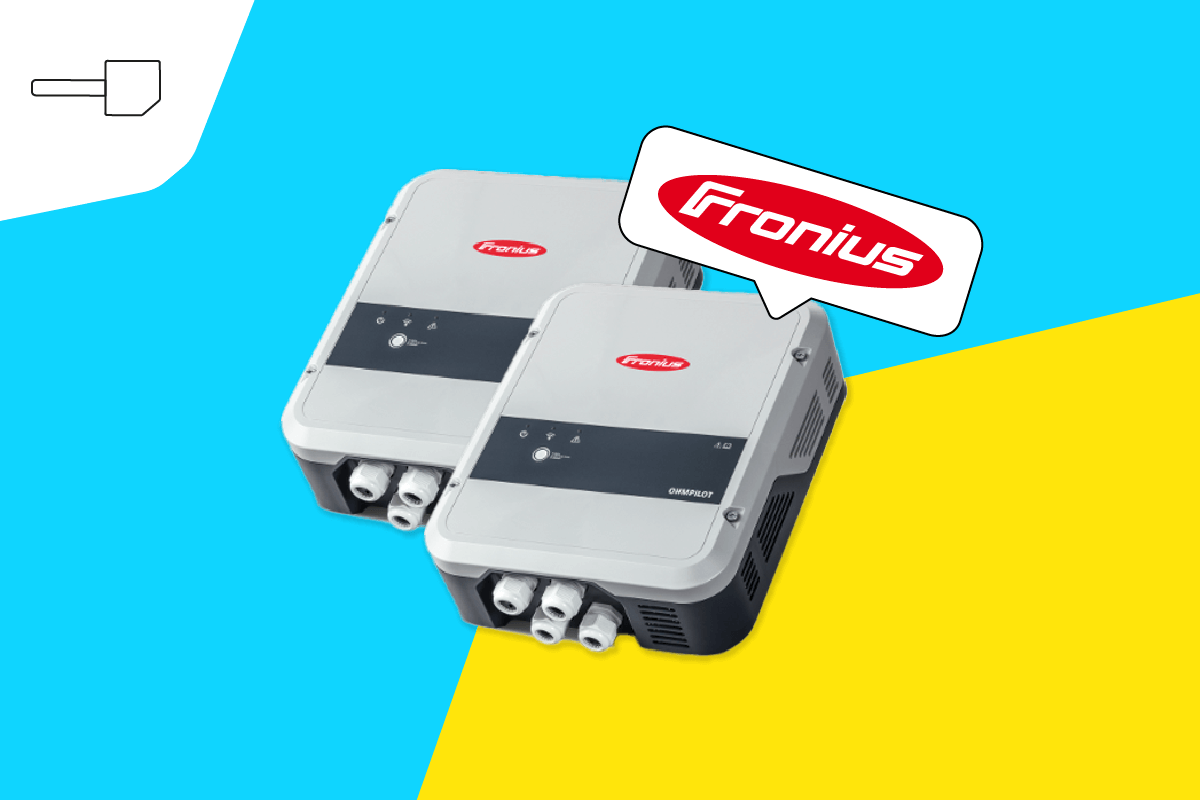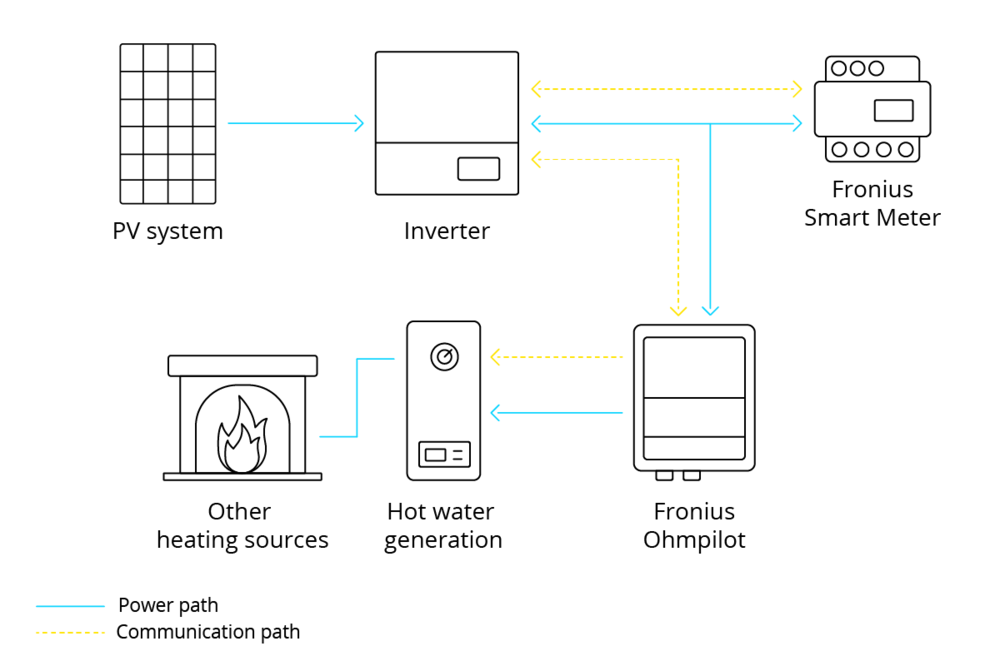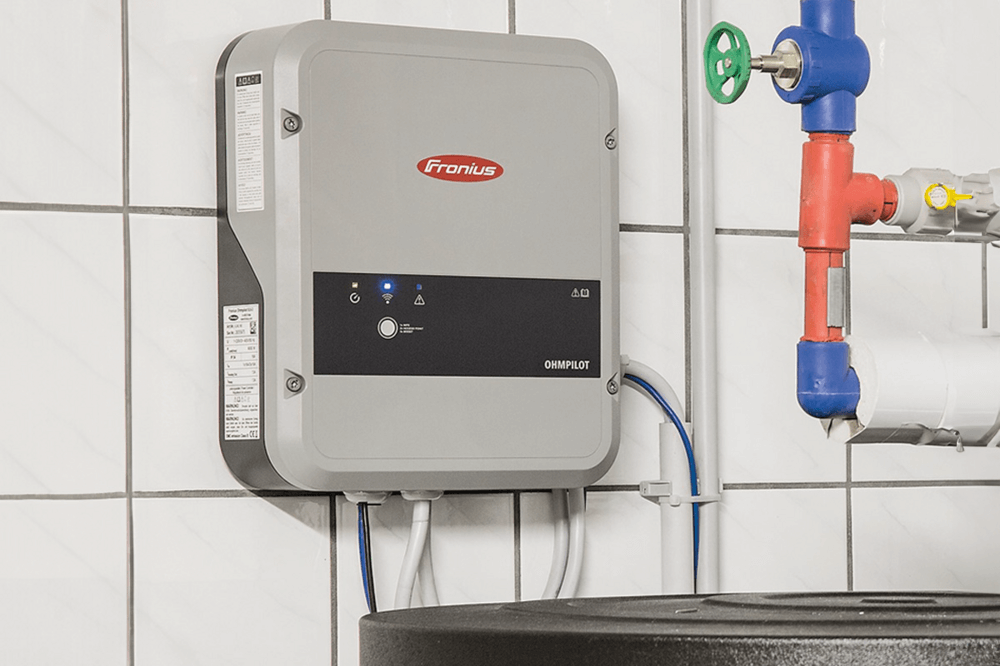Fronius Ohmpilot - hot water production through solar power

In times when feed-in tariffs are low and grid electricity costs are high, it makes sense to supply as many appliances as possible with solar energy generated from your own photovoltaic system. The Fronius Ohmpilot optimises the supply of hot water using solar energy, increasing this way the self-consumption of the household and reducing CO₂ emissions. In this guide, we will show you what the Fronius Ohmpilot is able to do.
What is the Fronius Ohmpilot?
The Fronius Ohmpilot is an intelligent consumption regulator for ohmic loads. These devices, usually heating elements for hot water generation, use electrical resistance to generate heat. They have a thermal efficiency of 100% - 1 watt of electrical energy becomes 1 watt of thermal energy. We have already explained in this guide how a heating element works and when it is worthwhile. With the Fronius Ohmpilot, it works exceptionally efficiently. Let's go into more detail…
This is how the Fronius Ohmpilot works:
The Ohmpilot continuously supplies up to 9 kW of surplus solar energy directly to loads such as heating elements, towel radiators or infrared heaters, making therefore optimum use of even a small amount of surplus PV energy. This means that a household can cover its hot water consumption needs almost entirely with self-generated solar energy for 8 months a year. This saves money, reduces CO₂ emissions and allows the primary heating source to be completely switched off during these months.
The Fronius Ohmpilot is compatible with heating elements that have a separate neutral conductor, meaning that if the heating element only has a star connection, you cannot connect it to the Ohmpilot.
Thanks to the PWM (Pulse-Width Modulation) technology, the Ohmpilot regulates loads continuously, and is therefore extremely flexible. Moreover, it makes optimum use of the available energy - not a single watt of PV power is wasted. The Fronius Ohmpilot also boasts a high output power range: It controls heating elements up to 9 kW output.
Requirements, installation and set-up - what you need to know.
To use the Fronius Ohmpilot in a household, you need to install a Fronius smart meter if you do not already have one. The Ohmpilot uses data from the smart meter to measure and adjust energy consumption. By analysing the data in real time, the Ohmpilot can make intelligent decisions to control the power of ohmic loads.
To do this, the Ohmpilot communicates with other system components such as the inverter via a network cable (LAN, WLAN, RS 485 Modbus). You set it up using the Solar.start application from Fronius Solar.web and configure the settings by means of the local web interface of the Ohmpilot. Depending on the needs of the household, you can set whether the inverter should prioritise the Ohmpilot for hot water supply or the energy storage system.
Here we answer some frequently asked questions about installation and set-up:
Which heating element do you want to install?
The Fronius Ohmpilot works with all 1- and 3-phase heating elements that have an additional neutral conductor. The maximum output is 9 kW.
What other components are used in the household?
The Ohmpilot is compatible with inverters from various manufacturers. It requires a Fronius Smart Meter and a Fronius Datamanager Box 2.0.
What do you need to consider when it comes to a hybrid heating system?
There must be a heating element as load in the heating system. Otherwise, it must be installed in the boiler or buffer cylinder. A free heating element without additional electronic control is sufficient for this purpose, as the Ohmpilot takes over the control.
How does the installation process work?
Fronius explains the installation of the Ohmpilot in this video:
Connecting yesterday and tomorrow: Use of hybrid energy with the Fronius Ohmpilot
Many households in Germany still use older heating systems that burn oil or gas. These types of systems in particular can take advantage of the Fronius Ohmpilot: Most conventional boilers can be retrofitted by adding a heating element, which the Ohmpilot then supplies with electricity generated from the household’s own PV system. This avoids using fossil fuels and therefore reduces CO₂ emissions: good for the environment, good for the wallet.
The Fronius Ohmpilot also works well in combination with a heat pump. It has an SG-Ready (Smart Grid Ready) output, which allows surplus PV energy to be supplied to both the heating rod and a heat pump. This ensures that the Ohmpilot remains future-proof even if the heating systems change.
Conclusion
The Fronius Ohmpilot contributes to the energy transition by optimizing the use of solar energy for hot water production. With its highly flexible design, it is compatible with both older fossil fuel heating systems and modern heating pumps. It increases a household's self-consumption, thereby saving money and reducing CO₂ emissions.
Summary
- The Fronius Ohmpilot is a new consumption regulator for ohmic loads up to 9 kW that are powered with solar energy.
- It controls heating elements, towel radiators and infrared heaters with watt precision, thus maximising self-consumption.
- The Fronius Ohmpilot complements both fossil fuel heating systems and heat pumps for eco-friendly hot water production.


































